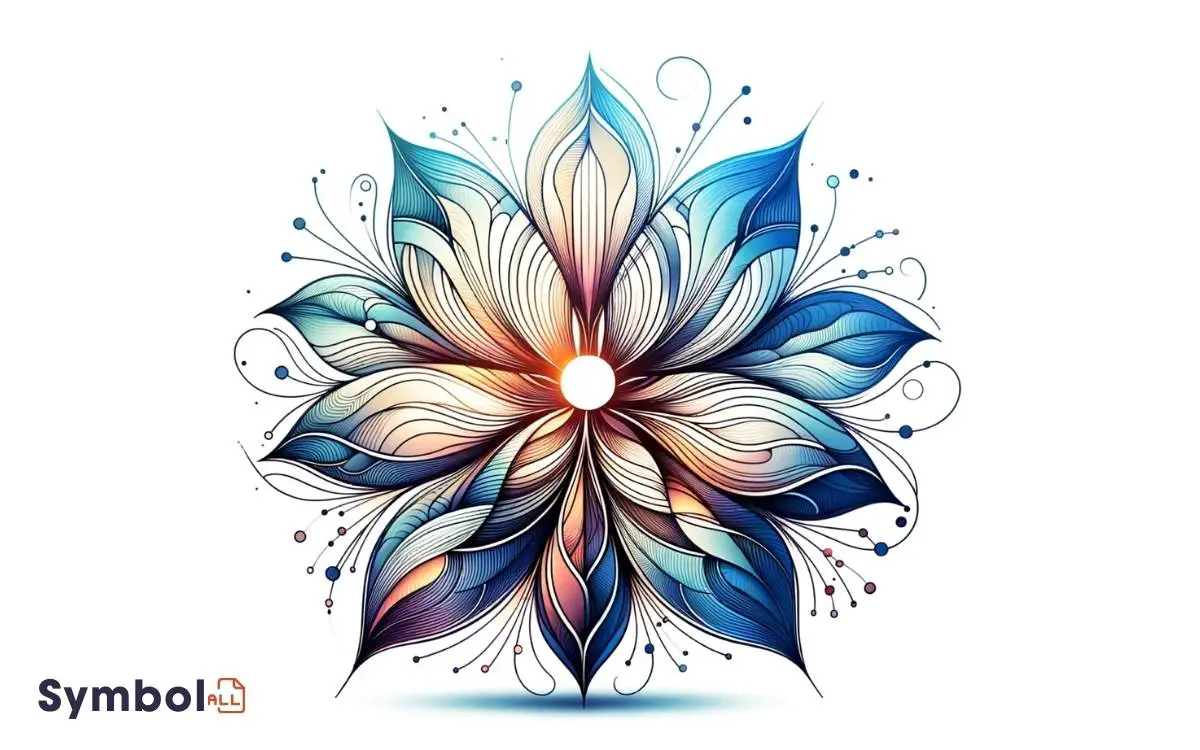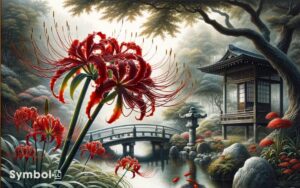Flower That Symbolizes Peace and Love: White Rose!
You’re looking at the white rose as a potent symbol of peace and love, deeply rooted in genetic, environmental, and hybridization intricacies. Its purity, innocence, and peaceful aura aren’t just by chance; they’re the result of precise cultivation techniques honed over centuries.
Historically, white roses have transcended cultures, embodying harmony and new beginnings, especially in weddings.
Unlike other symbols like the olive branch or white lily, the white rose uniquely bridges the gap between scientific complexity and profound cultural significance.
If you’re intrigued by how these factors interplay to shape our understanding of symbols like the white rose, there’s much more beneath the surface to explore.

Key Takeaways
The White Rose: An Overview
Moreover, the white rose, often symbolizing purity and peace, stands out in the botanical world due to its unique pigmentation and historical significance in various cultures.
Its distinctive coloration isn’t merely a result of a lack of pigments but involves a complex interplay of genetics, environment, and sometimes, deliberate hybridization.
Scientists have found that a specific gene, when inactive or suppressed, inhibits the production of anthocyanins, the pigments responsible for red, purple, and blue hues in flowers. This genetic suppression results in the white rose’s pristine appearance.
Moreover, the cultivation techniques and environmental factors such as soil pH and temperature can influence the intensity and purity of the white coloration, making the cultivation of white roses a meticulous and precise science.
Historical Significance
You’ll find that the historical significance of the white rose spans from ancient cultural representations to its modern symbolic uses.
This metamorphosis illustrates how societies have consistently attributed values of peace and love to this particular flower, reinforcing its role across different epochs.
Analyzing these changes offers insights into the evolving human perception of symbols and their enduring impact on collective consciousness.
Ancient Cultural Representations
Throughout history, diverse cultures have adopted specific flowers as symbols for peace and love, reflecting their deep-seated beliefs and values.
In ancient Egypt, the lotus flower, emerging pristine from murky waters, symbolized rebirth and the eternal cycle of life and death, embodying peace and purity.
Similarly, the ancient Greeks associated the olive branch with peace, while the rose became emblematic of love and beauty, deeply ingrained in their mythology and artistic expressions.
In East Asian traditions, the peony represented wealth, honor, and high social status, but also love and affection, showcasing a dual symbol of material and emotional prosperity.
These floral symbols served not merely as decorative elements but were imbued with profound cultural significance, encapsulating complex human emotions and societal ideals in their delicate forms.
Modern Symbolic Uses
In modern times, flowers continue to hold significant symbolic value, serving as powerful emblems for peace and love across various global contexts.
You’ll find that contemporary societal movements frequently harness the universal language of flowers to convey messages of unity and compassion.
For instance, the white poppy has emerged as a symbol of peace, particularly in anti-war movements, representing a commitment to nonviolence and remembrance of the casualties of war without glorifying conflict.
Similarly, the rose, with its diverse color palette, communicates different facets of love and fellowship.
A red rose, for instance, signifies deep love and respect, while white roses are often associated with new beginnings and reverence. This nuanced floral lexicon allows for complex emotional expressions, bridging cultural and linguistic divides in pursuit of a more harmonious world.
Symbolism in Cultures
You’ll find that cultural interpretations of symbols, including flowers, vary greatly across regions, reflecting diverse historical and social contexts.
These variations lead to distinct representations of peaceful love, with each culture attaching unique meanings to similar symbols.
An analytical examination of these differences reveals the complex ways in which societies express core values through flora.
Cultural Interpretations
Across various cultures, the symbolism attached to specific flowers for peace and love has deep roots, reflecting traditions, beliefs, and historical contexts unique to each society.
| Culture | Flower | Symbolism |
|---|---|---|
| Japanese | White Chrysanthemum | Peace and Reincarnated Love |
| Ancient Greek | Olive Branch | Peace and Victory |
| European | White Lily | Purity and Love |
| Egyptian | Lotus | Rebirth and the Sun |
In Japan, the white chrysanthemum represents peace and reincarnated love, deeply tied to spiritual beliefs and the cycle of life.
Ancient Greeks revered the olive branch as a symbol of peace and victory, integrating it into their mythology and diplomatic practices.
In European cultures, the white lily stands for purity and love, often featured in religious and wedding ceremonies. The Egyptian lotus symbolizes rebirth and the sun, reflecting the renewal of life and eternal love.
Peaceful Love Representations
Throughout various cultures, flowers often symbolize peaceful love, embodying complex emotions and societal values within their delicate forms.
This symbolic representation isn’t arbitrary but deeply ingrained in historical, cultural, and even botanical significances.
To understand the depth of this symbolism, consider the following specifics:
- White Roses: Symbolize purity and innocence, often used in weddings to denote peaceful, enduring love.
- Lavender: Represents tranquility, serenity, and calmness, aligning with peaceful love.
- Olive Branch: Though not a flower, it’s universally recognized as a peace symbol, often accompanying love in reconciliatory gestures.
- Lotus: In Eastern cultures, signifies purity, enlightenment, and the triumph of love over adversity.
- Cherry Blossom: Symbolizes the transient nature of life, reminding us of the peaceful, loving moments to cherish.
These examples demonstrate how flora can encapsulate profound societal values and emotions, reinforcing the notion that peaceful love transcends mere sentiment, embedding itself deeply within cultural expressions.
Peaceful Connotations Explained
In analyzing the symbolism of flowers, it’s evident that specific species are universally recognized for their associations with peace and love. This is not merely a cultural phenomenon but is deeply rooted in the botanical characteristics and historical uses of these plants.
To understand these connotations, let’s explore the scientific and symbolic aspects of certain flowers.
| Flower | Peaceful Connotation Explained |
|---|---|
| White Lily | Symbolizes purity and tranquility, often used in peace offerings. |
| Olive Branch | Represents peace, historically used as a symbol of ceasefire. |
| Lavender | Associated with calmness and serenity, promoting peaceful thoughts. |
| White Rose | Denotes harmony and new beginnings, embodying peace and hope. |
| Jasmine | Conveys amity and affection, supporting a peaceful atmosphere. |
These flowers carry profound meanings, transcending their aesthetic value to embody concepts of peace and harmony.
Expressions of Love
Just as certain flowers symbolize peace, others are deeply embedded with expressions of love, offering insight into the complex interplay between botany and human emotions.
You’ll find that these botanical symbols carry profound meanings:
- Roses: Often associated with romantic love, their color variations express different aspects of love, from passionate desire (red) to friendship (yellow).
- Tulips: Symbolize perfect love, with red tulips making a bold statement of deep love.
- Carnations: Represent fascination and new love, with pink carnations often signifying a mother’s undying love.
- Orchids: These exotic blooms express love, luxury, beauty, and strength.
- Lilies: Particularly white lilies, symbolize purity and refined beauty, often used to express deep, platonic love.
These flowers reveal the intricate ways in which flora can communicate complex human emotions.
Uses in Ceremonies
Flowers frequently serve as central elements in various ceremonies, symbolizing themes like unity, remembrance, and celebration with scientific precision.
In the domain of peace and love, particular species have been meticulously selected for their emblematic significance and physiological impact on human emotions.
During weddings, for instance, you’ll find these flowers meticulously arranged to signify the harmonious union of individuals, leveraging their aesthetic appeal and fragrance to evoke feelings of love and companionship.
In funerals, they’re chosen to convey solace and respect, honoring the departed while providing visual and olfactory comfort to the bereaved.
Scientific studies suggest that the mere presence of specific floral arrangements can substantially alter the ambiance of a ceremony, influencing mood and interpersonal connections through their symbolic language and biochemical properties.
Gardening Tips
To nurture a garden that embodies peace and love, one must consider the specific needs and preferences of the symbolic flowers chosen for this purpose, paying close attention to factors such as soil pH, sunlight exposure, and watering schedules.
- Soil pH: Certain flowers thrive in acidic or alkaline environments. Utilize a pH meter to determine your garden’s soil condition and adjust accordingly.
- Sunlight Exposure: Research each plant’s sunlight requirements, grouping those with similar needs together to guarantee ideal growth.
- Watering Schedules: Over or under-watering can lead to plant stress. Implement a consistent watering plan based on each species’ needs.
- Nutrient Balance: Regularly test soil for essential nutrients and supplement with organic fertilizers as needed.
- Pest Control: Identify and apply eco-friendly solutions for common pests to avoid chemical usage that can harm your garden’s ecosystem.
Inspiring Stories
Beyond the meticulous care of your garden, the stories of those who’ve nurtured peace and love through symbolic flowers offer profound insights into the transformative power of gardening. Let’s explore further into the narratives that illustrate this impact.
| Symbolic Flower | Location | Impact |
|---|---|---|
| White Poppy | Europe | Used as a symbol for peace, especially post-WWI, it represents the collective desire for tranquility and the end of conflicts. |
| Rose | Worldwide | Long-standing emblem of love and affection, fostering connections and understanding across cultures. |
| Lotus | Asia | Symbolizes purity and enlightenment, encouraging individuals to rise above adversities with grace and resilience. |
These examples underscore the capacity of flowers not just to beautify spaces, but to also embody and promote essential human values.
Conclusion
In sum, the white rose isn’t just a feast for the eyes; it’s a potent symbol of peace and love deeply rooted in history and culture.
Its peaceful connotations and expressions of love aren’t just superficial but are backed by a rich tapestry of meanings across various ceremonies and traditions.
By incorporating these blooms into your garden, you’re not just adding beauty; you’re planting seeds of harmony.
Remember, every rose has its thorn, but the white rose’s message transcends its physical form, offering a timeless emblem of tranquility and affection.






